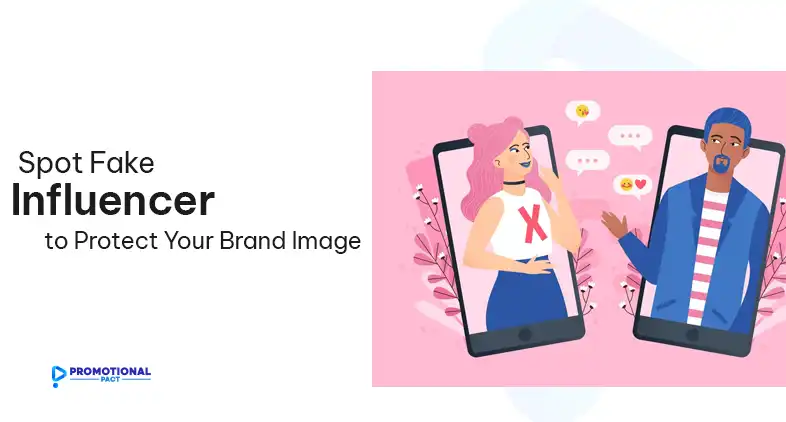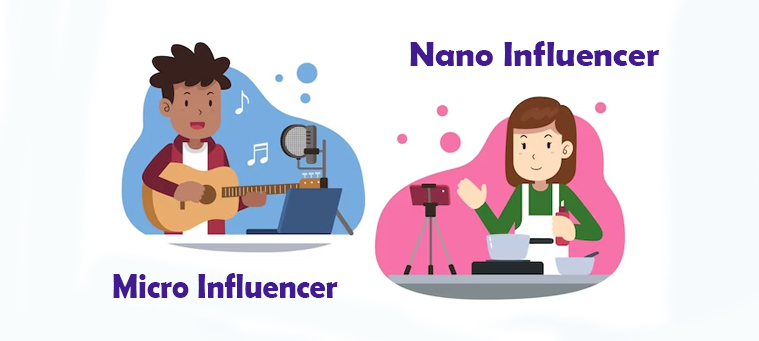
Short Answer: Spotting fake influencers is essential for brands to safeguard their reputation. By analyzing engagement rates, follower growth, and content quality, and using influencer marketing platforms and manual checks, businesses can ensure that they partner with authentic influencers, maximizing both brand credibility and marketing ROI.
Why Is It Important to Identify Fake Influencers for Your Brand?
Influencer marketing has become one of the most powerful tools for brands seeking to reach new audiences and build trust. As of 2023, influencer marketing is expected to surpass $21 billion globally, highlighting its effectiveness in connecting brands to engaged communities. However, this rapid growth has also given rise to a concerning issue: fake influencers. These are individuals who inflate their follower counts, likes, and comments using artificial means, often misleading brands about their true reach and engagement levels.
When brands unknowingly partner with fake influencers, the consequences can be damaging. Wasted marketing budgets, loss of credibility, and potential harm to customer trust are just a few of the risks. This article will walk you through practical steps to spot fake influencers, understand the types of fraud prevalent in influencer marketing, and make informed decisions to protect your brand image.
What Are Fake Influencers and How Can They Harm Your Brand?
Fake influencers are individuals or accounts that artificially boost their online presence, creating a misleading image of their popularity or influence. They often engage in tactics such as purchasing followers, utilizing bot engagement, and joining “engagement pods” to appear more reputable than they are. Collaborating with these influencers can mislead audiences and create a false sense of trust, ultimately risking your brand’s integrity.
Types of Fake Influencers
- Bot-Driven Accounts: These accounts use automated bots to inflate followers and likes. Engagement may appear real but lacks genuine human interaction.
- Purchased Followers and Likes: Some influencers buy followers or likes in bulk, creating a misleading follower base that doesn’t truly interact with their content.
- Engagement Pods: Groups where influencers agree to like and comment on each other’s posts, artificially boosting engagement rates.
- Inactive or Irrelevant Followers: Real followers who no longer engage or are geographically unrelated to the influencer’s target audience may indicate a lack of genuine influence.
By understanding these distinctions, brands can start to identify the red flags that indicate fake influence and take steps to avoid costly partnerships.
Method #1: Analyze Follower Engagement
Follower engagement is one of the strongest indicators of an influencer’s authenticity. While follower count alone can be misleading, engagement rate—calculated as the ratio of likes and comments to total followers—often reveals a clearer picture.
Engagement Rate
The engagement rate offers insight into how actively an influencer’s followers are engaging with their content. Here’s a basic formula:
Engagement Rate (%)=(Total Likes + CommentsTotal / Followers)×100
For example, an influencer with 100,000 followers, 1,500 likes, and 200 comments per post would have an engagement rate of 1.7%, which might be low depending on the platform. Average engagement rates by platform (2023 data) vary widely:
| Platform | Average Engagement Rate (%) |
| 1-3% | |
| TikTok | 5-10% |
| 0.5-1% |
Low engagement relative to follower count can be a red flag, signaling either fake followers or disengaged audiences.
Comment Analysis
Genuine influencers typically have varied and specific comments, often showing an engaged and active community. On the other hand, fake engagement can be identified through comments that are vague, repetitive, or generic, like “Great post!” or random emojis. Comments per post that are primarily generic or irrelevant may indicate inauthentic engagement.
Follower Quality
Fake influencers often attract low-quality followers, including bot accounts or inactive profiles. Indicators of low-quality followers include accounts with minimal posts, random usernames, or low follower-to-following ratios. Reviewing a sample of follower profiles can help you identify this.
Method #2: Check for Suspicious Follower Growth
Tracking an influencer’s follower growth can reveal irregular patterns that may indicate purchased followers. Sudden, unexplained spikes in follower count, especially if the influencer has no notable new content or collaborations, are often a red flag.
Tools for Analyzing Growth
Platforms like HypeAuditor and Social Blade allow brands to analyze an influencer’s growth history. Consistent, organic growth tends to be gradual, while large, sudden jumps may indicate artificial manipulation.
Follower Location
A suspicious follower location distribution—such as an influencer based in the U.S. with a high percentage of followers from unrelated regions—can also reveal possible follower purchasing. Regional relevance is key; an influencer’s audience should typically align with their location or their niche’s target demographics.
Method #3: Check for Content Consistency
An influencer’s content consistency speaks volumes about their engagement and dedication to their audience. Here are a few aspects to consider:
Post Frequency and Schedule
Authentic influencers usually have a consistent posting schedule and demonstrate ongoing activity. In contrast, infrequent or irregular posting may indicate an unengaged or artificial audience.
Content Quality and Originality
High-quality content often reflects a genuine influencer’s commitment to their followers. Look for original, high-resolution images and meaningful captions. Low-quality or repetitive content with excessive filters or lack of creativity can be a red flag.
Brand Partnerships
Influencers with a history of collaborations with reputable brands are more likely to be authentic. Reviewing an influencer’s past partnerships can provide insight into their credibility. For instance, if they’ve worked with well-known brands in your industry, they’re likely more trustworthy than influencers with few or unknown brand connections.
Method #4: Use Influencer Marketing Platforms to Verify Authenticity
Influencer marketing platforms offer tools to help verify engagement and audience authenticity. By leveraging these platforms, brands can access detailed analytics that make it easier to detect fake influencers.
Platform Features
Platforms like Upfluence, AspireIQ, and Traackr provide advanced metrics, including follower demographics, audience location, and engagement rates. These insights can reveal if an influencer’s audience aligns with your brand’s target audience.
Third-Party Verification Services
Third-party services also exist specifically for fraud detection, analyzing follower quality and engagement authenticity. For instance, some services offer “follower health” scores, assessing the quality and engagement patterns of an influencer’s audience.
What Are the Best Practices for Building Brand Partnerships with Influencers?
To establish successful and secure influencer partnerships, brands should consider a set of best practices.
Setting Clear Goals and KPIs
Defining clear objectives for the partnership helps ensure alignment between brand and influencer. Common KPIs for influencer marketing include engagement rates, conversions, and reach. For instance, if a campaign aims to boost engagement, a KPI might be a minimum engagement rate of 2%.
Creating Contractual Agreements
Outline specific expectations in the contract, such as deliverables, posting frequency, and crisis management provisions. Include a clause for content approval to protect brand image, and consider a non-compliance penalty for influencers who fail to meet agreed standards.
Ensuring Transparency and Authenticity
Encourage influencers to create genuine content that feels authentic to their style, rather than overly promotional. To maintain FTC compliance, all sponsored content should be disclosed transparently.
Monitoring and Measuring Campaign Results
Continuous monitoring of the campaign’s performance, using analytics tools like Google Analytics or Sprout Social, allows brands to track engagement, ROI, and audience response. Adjust strategies as needed based on these insights.
Additional Tips for Spotting Fake Influencers
1. Visual Quality of Content
Low-quality visuals, inconsistent themes, or excessive filter use can be indicators of a lack of dedication to authenticity.
2. Direct Outreach
Engaging directly with influencers can reveal how knowledgeable and responsive they are. This interaction can be valuable for gauging their professionalism and interest in your brand.
3. Staying Updated on Influencer Fraud Tactics
Fraud tactics evolve, so it’s essential for brands to stay informed. Subscribe to industry newsletters or attend webinars on influencer marketing trends.
Final Words
Protecting your brand image in the influencer marketing landscape requires diligence, authenticity, and awareness. By carefully analyzing engagement, follower growth, and content quality—and by leveraging platforms for verification—you can safeguard your brand from the risks of partnering with fake influencers. As influencer marketing continues to grow, adapting to new trends and maintaining rigorous standards will ensure the integrity of your brand.
The Future of Influencer Marketing looks promising, yet challenging, with brands increasingly focusing on long-term relationships with genuine influencers who can build meaningful connections with audiences.
FAQ
What is a fake influencer?
A fake influencer is someone who artificially inflates their follower count, likes, or comments to appear more popular than they are, often misleading brands.
Why are engagement rates important in spotting fake influencers?
Engagement rates reveal how actively an influencer’s followers interact with content. Low engagement relative to follower count is often a red flag.
How do sudden spikes in follower growth indicate fraud?
Sudden, large increases in followers, especially without major events or collaborations, can indicate purchased followers.
What tools help verify influencer authenticity?
Tools like HypeAuditor, Social Blade, and Upfluence analyze follower demographics, engagement, and growth patterns to detect fraud.
How can brands ensure compliance with influencer marketing best practices?
By setting clear goals, creating contracts with specific deliverables, and maintaining transparent disclosures, brands can protect their reputation while building genuine influencer partnerships.

